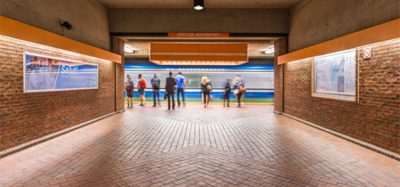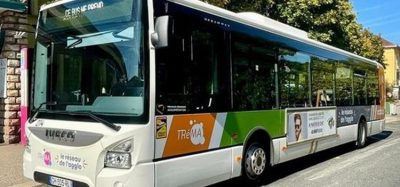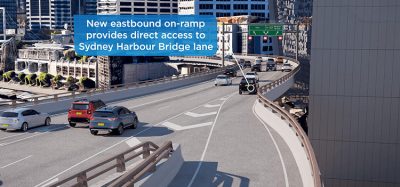The exciting potential of mobility management
- Like
- Digg
- Del
- Tumblr
- VKontakte
- Buffer
- Love This
- Odnoklassniki
- Meneame
- Blogger
- Amazon
- Yahoo Mail
- Gmail
- AOL
- Newsvine
- HackerNews
- Evernote
- MySpace
- Mail.ru
- Viadeo
- Line
- Comments
- Yummly
- SMS
- Viber
- Telegram
- Subscribe
- Skype
- Facebook Messenger
- Kakao
- LiveJournal
- Yammer
- Edgar
- Fintel
- Mix
- Instapaper
- Copy Link
Posted: 22 June 2011 | Suvi Rihtniemi, Executive Director, Helsinki Regional Transport Authority (HSL) | No comments yet
HSL – Helsinki Regional Transport – plans and procures public transport services in the Helsinki region on behalf of its member municipalities. HSL is also responsible for strategic public transport planning and long-term transport system planning. Mobility management was included in HSL’s activities at the beginning of 2010 when the new joint local authority began its operations. HSL coordinates mobility management within 14 Helsinki region municipalities. The Finnish Transport Agency coordinates mobility management at national level on behalf of the Ministry of Transport and Communications. HSL also actively participates in national development projects.
Mobility management is about influencing people’s travel behaviour mainly through marketing and communications. It is also about making public transport and other sustainable modes of transport, like walking and cycling, as attractive as possible.
HSL – Helsinki Regional Transport – plans and procures public transport services in the Helsinki region on behalf of its member municipalities. HSL is also responsible for strategic public transport planning and long-term transport system planning. Mobility management was included in HSL’s activities at the beginning of 2010 when the new joint local authority began its operations. HSL coordinates mobility management within 14 Helsinki region municipalities. The Finnish Transport Agency coordinates mobility management at national level on behalf of the Ministry of Transport and Communications. HSL also actively participates in national development projects. Mobility management is about influencing people’s travel behaviour mainly through marketing and communications. It is also about making public transport and other sustainable modes of transport, like walking and cycling, as attractive as possible.
HSL – Helsinki Regional Transport – plans and procures public transport services in the Helsinki region on behalf of its member municipalities. HSL is also responsible for strategic public transport planning and long-term transport system planning. Mobility management was included in HSL’s activities at the beginning of 2010 when the new joint local authority began its operations. HSL coordinates mobility management within 14 Helsinki region municipalities. The Finnish Transport Agency coordinates mobility management at national level on behalf of the Ministry of Transport and Communications. HSL also actively participates in national development projects.
Mobility management is about influencing people’s travel behaviour mainly through marketing and communications. It is also about making public transport and other sustainable modes of transport, like walking and cycling, as attractive as possible.
In the long-term, it is also possible to contribute to the development of a sustainable urban structure. The aim is to integrate land use and transport more closely so that new residential and employment areas are built in existing centres along good public transport connections. This contributes to a more coherent urban structure, reduces the need to travel, saves natural resources and enables well-functioning public transport services. HSL is a key actor in all of this in the major commuting area in Finland. HSL’s cooperation network is extensive covering the State, cities in the region, businesses, important places of personal business, schools and special needs groups.
We reach a large number of people through corporate cooperation
HSL cooperates closely with businesses because the cooperation enables us to efficiently reach large numbers of people. HSL’s experts advise businesses and their personnel in making their mobility choices. In addition, we offer businesses various tools and services we have developed.
Often, even in the first meeting with a company’s administrative HR and property management departments, several means for promoting sustainable modes of transport may emerge. The means can include dissemination of information through information sessions, in writing or via different online services. Other means include improving services in the office premises, for example improving bicycle parking and providing employees with a bicycle for work-related errands or a public transport ticket.
A company also often benefits from a mobility plan or a survey on the staff’s travel habits drawn up with HSL. At the same time, efforts are made to commit the staff to sustainable mobility. The staff can also contribute their development ideas. By repeating the mobility survey at suitable intervals, the company can monitor its progress in promoting sustainable mobility. Also, in the future it will be possible to utilise comparison data from other companies for HSL in developing a databank of commuting emission data.
HSL also offers businesses advice on choosing a location to help businesses compare the accessibility of alternative locations by public transport, for example, at peak commuting hours. It is also possible to create an illustrative public transport accessibility map using a tool based on the Journey Planner data.
In addition, HSL offers a tailored ‘My Departures’ service with which it is possible to search for timetables for specific stops and to open an up-to-the-minute timetable on a mobile phone, the company’s intranet or lobby screen. HSL’s route search service Journey Planner (http://www.reittiopas.fi/en/) is one of the most popular online services in Finland and is therefore a familiar tool for many. The Journey Planner gives advice on the best public transport connections to a destination within the Helsinki metropolitan area. The service contains all street addresses in the region and plenty of other place names. A Journey Planner for cycling and an emission calculator have also been added into the service.
It is fair to say that HSL has met with a positive reception from businesses. Corporate cooperation has been fruitful for HSL, too. In addition to promoting our services, we have been able to obtain a good deal of useful information on people’s travel needs and thus also on public transport development needs. In some cases, companies’ plans to move location have come up in the meetings, enabling HSL to tackle the immediate demand for new public transport services arising from the plans. This kind of cooperation between businesses and public transport planners is essential for achieving high-quality, customer-oriented public transport.
HSL listens to its customers and partners in cooperation
HSL wants to engage in active dialogue with residents and operators in order to improve the quality of and operating conditions for public transport. Interaction with residents and partners in cooperation is an integral part of HSL’s planning process. Customer focus is a process of its own. The process has been defined and its implementation is monitored. The process description also helps planners determine when interaction is needed and which means should be used.
The planning process uses feedback and various surveys and studies as source information. HSL annually receives approximately 30,000 feedback comments from customers. Most of them are submitted via the internet and the rest are given by phone to customer service staff or directly to planners. Resident surveys are conducted on a continuous basis, but also to address a specific need. HSL also actively participates in the BEST survey conducted in European metropolises. The surveys provide valuable information both about things that need to be improved and about quality and value factors related to public transport that are already in good shape.
Multiple channels of interaction
In addition to traditional surveys, HSL uses several other channels of interaction when developing its services. The traditional questionnaires conducted with randomised samples from the population register still provide a good idea of the desires, travel habits and needs of the population living in the planning area. In addition to online questionnaires, it is advisable to provide paper forms for those who prefer not to respond online. Residents’ meetings organised to present route network plans attract both people involved in resident associations and senior citizens, housewives and neighbourhood advocates.
HSL has also harnessed social media for planning. We have created an online community to which we invite people interested in the public transport planning in a given area. The participants are asked questions about issues that affect their use of public transport. They are also asked to comment on planned route network and timetable changes. The online community provides more comprehensive information about the residents’ views than traditional questionnaires.
We can also steer the discussions of the community to topics that are of interest from the point-of-view of planning. At the same time, we can provide more detailed information about questions related to the planning, explain alternatives and address misconceptions. We have been successful in engaging people in these online communities, and what is most interesting is that a larger part of the participants are male and persons who do not use public transport than of respondents to traditional surveys. Along with these channels we interact with municipalities, businesses and service providers by phone and email to get valuable information to support transport planning.
We trialled this kind of multi-channel interaction in the planning of the route network of a new member municipality, Kirkkonummi. We will utilise the experiences we have got in future when planning the route networks of new member municipalities or other route networks in the region.
HSL is involved in many projects
HSL will also actively participate in various national and international mobility manage – ment projects in the future. We take part in the national mobility management network LIVE, which is part of the EPOMM-PLUS project. We also participate in the ‘momo’ Car-Sharing project and support the activities of Ilmasto.info, which is a new information centre that provides information and advice for greener living.
We also take part in the LOOP project coordinated by the Ministry of Transport and Communications and in the CityInnoNets project of the Aalto University. The LOOP project develops common guidelines for schools for developing mobility plans. Currently the project is in the pilot stage in around 10 schools in the metropolitan area. The project seeks to find a model in which schools can utilise a ready-made template for their mobility plans and surveys. The CityInnoNets project seeks to define common guidelines and a resident interaction process for businesses, the public sector and third sector. The pilot area is a new neighbourhood of Jätkäsaari which is planned to be car-free.
HSL also continues cooperation and interaction with businesses both through its own projects as well as several joint projects. However, it is already evident that our resources will not necessarily be sufficient for all of this. Therefore, HSL has developed partnerships with other actors in the field such as car-pooling and ride sharing businesses and a future city bike system. We are also studying the possibilities for cooperation with consulting companies. They could possibly provide HSL with additional resources for the preparation of mobility plans and other mobility management consulting services.
HSL believes that mobility management and corporate cooperation have a lot of exciting potential. We will continue to develop our service and operating concept for there is clearly demand for this service.
About the Author
Suvi Rihtniemi has been the Executive Director of Helsinki Regional Transport Authority since September 2009. Before this, Suvi served as the Head of Operational Support and Development in the National Land Survey of Finland.
Related topics
Business Models, Infrastructure & Urban Planning, Intelligent Transport Systems (ITS), Multimodality, Traffic Management
Issue
Issue 3 2011
Related organisations
Helsinki Regional Transport Authority (HSL)
Related people
Suvi Rihtniemi








